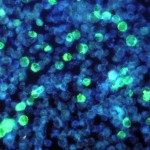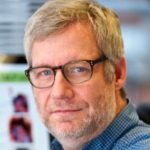Link to Pubmed [PMID] – 16285254
Cell Transplant 2005;14(7):457-67
The development of an optimized animal model for the in vivo analysis of human muscle cells remains an important goal in the search of therapy for muscular dystrophy. Here we examined the efficiency of human myoblast xenografts in three distinct immunodeficient mouse models. We found that different conditioning regimes used to provoke host muscle regeneration (i.e., cardiotoxin versus cryodamage) had a marked impact on xenograft success. Tibialis anterior muscle of Rag2-, Rag-/gammac-, and Rag-/gammac-/C5- mice was treated by cardiotoxin or cryodamage, submitted to enzymatic digestion, and analyzed by cytofluorometry to quantitate inflammatory cells. Human myoblasts were injected into pretreated muscles from immunodeficient recipients and the cell engraftment evaluated by immunocytochemistry, 4-8 weeks after transplantation. Donor cell differentiation and dispersion within the host muscles was also investigated. Host regeneration in cardiotoxin-treated mice was accompanied by a higher inflammatory cell infiltration when compared to that induced by cryodamage. Accordingly, when compared to the cardiotoxin group, more human myogenic cells were found after cryodamage. When the distinct immunodeficient mice were compared, we found that the alymphoid strain lacking the complement component C5 (Rag-/gammac-/C5- mice) was the most efficient host for human muscle xenografts, when compared with C5(+)Rag-/gammac- mice or Rag- mice. Our results demonstrate that cryolesion-conditioned muscles of Rag-/gammac-/C5- mice provide the best environment for long-term in vivo human myoblast differentiation, opening the way for a novel approach to study the pathophysiology of human muscle disorders.

